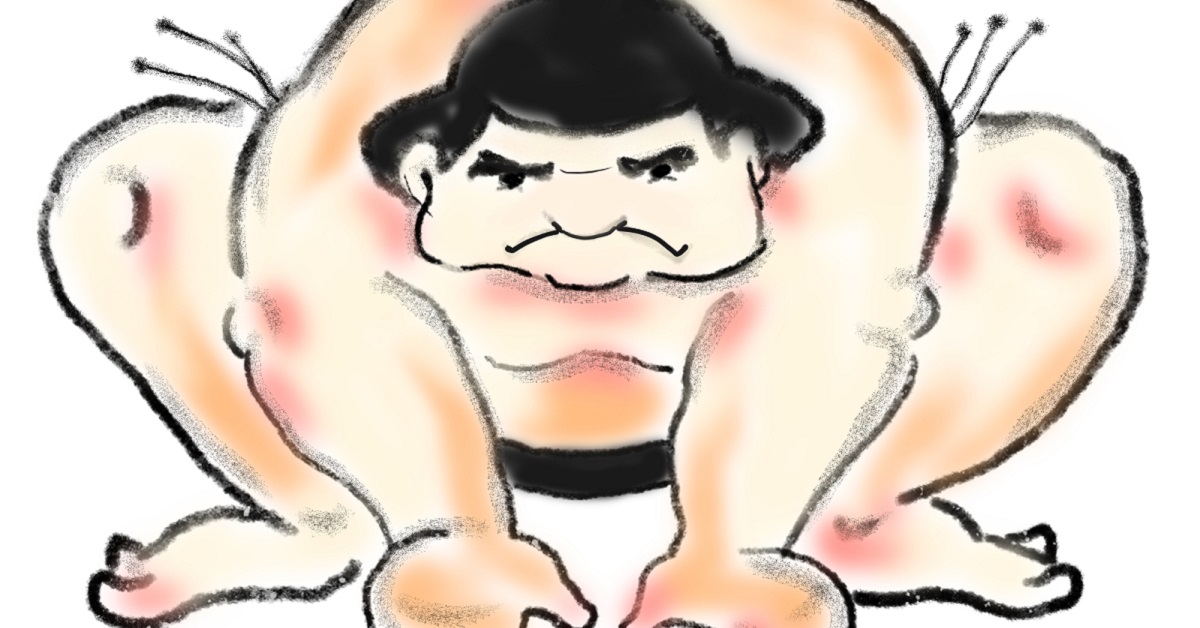Matawari, the traditional stretching exercise practiced by sumo wrestlers, is far more than a warm-up. It is a fundamental training method that enhances hip flexibility, prevents injuries, and strengthens overall performance. By consistently practicing matawari, both athletes and non-athletes can benefit from improved posture, greater stability, and long-term health.
What is Matawari?
Matawari is the exercise of sitting on the floor with legs spread wide, keeping the back straight, and leaning forward. The hip joint is the largest joint in the human body and serves as the key connection between the upper and lower body. By loosening this joint, it becomes possible to move the entire body more efficiently.
Matawari is not limited to sumo. It is also used in dance, gymnastics, and martial arts. A flexible hip joint helps maintain a beautiful posture and provides foundational support across disciplines.
| Discipline | Where It’s Applied | Effect |
|---|---|---|
| Sumo | Tachi-ai (initial charge), resisting throws | Maintains a stable, low stance |
| Dance | Performance, posture maintenance | Creates elegant body lines |
| Gymnastics | Overall routines | Smooth movement, prevents deductions |
| Martial Arts | Stance, evasive maneuvers | Enables swift body movements |
Purpose and Effects of Matawari
The primary goal of matawari is to increase hip joint flexibility, but its effects are wide-ranging.
| Effect | Description | Example |
|---|---|---|
| Expansion of range of motion | Easier to spread legs, allows deeper stance | Sumo tachi-ai |
| Injury prevention | Keeps muscles and ligaments supple to avoid damage | Soccer or rugby players |
| Performance improvement | Stabilizes balance and supports powerful movements | Throws, pushes |
Through matawari, rikishi (sumo wrestlers) can maintain stability and gain greater control in the ring.
The Importance of Matawari in Sumo
The essence of sumo lies in “taking with the hips.” Being able to stay low while moving freely is directly tied to victory. Wrestlers who practice matawari can keep their hips low without strain, resist their opponent’s charge at the initial clash, and avoid losing balance at the ring’s edge.
Additionally, matawari is also a form of mental training. Achieving the ability to touch the chest to the floor takes significant time and effort, and daily practice builds patience. This perseverance translates into resilience and persistence in real matches.
| Training Scene | Effect of Matawari |
|---|---|
| Initial charge | Prevents being overpowered |
| Throw countering | Hip flexibility allows resistance |
| Edge of the ring | Helps regain balance |
| General training | Develops mental focus and discipline |
Effects of Matawari on Daily Life
The benefits of matawari extend beyond the dohyo (sumo ring). In modern life, prolonged sitting causes the hip joints to stiffen, leading to back pain and poor posture. Practicing matawari as a daily habit improves blood circulation, reduces fatigue, and alleviates coldness in the body.
It also benefits sports enthusiasts.
| Sport | Effect of Matawari |
|---|---|
| Soccer | Expands kicking motion, reduces injuries |
| Baseball | Transfers lower body power effectively |
| Marathon | Prevents back pain during long runs |
| Martial Arts | Supports swift steps and evasions |
Thus, matawari serves as an exercise that improves both athletic performance and overall health.
Correct Method of Matawari
Matawari should never be forced. Following the correct method allows even beginners to practice safely.
- Sit on the floor with legs spread wide
- Keep the back straight and adjust posture
- Exhale while leaning the torso forward
- Extend both arms forward and bring the chest closer to the floor
- Stop before pain occurs and hold for several seconds
| Key Point | Note |
|---|---|
| Posture | Do not bend the back |
| Breathing | Keep natural, don’t hold it |
| Timing | Best after a bath or workout |
| Continuity | Practice daily in small amounts |
By focusing on posture and breathing, one can safely and effectively loosen the hip joints.
Conclusion
Matawari is a fundamental training routine in sumo, forming a pillar of a wrestler’s strength. By softening the hip joints, wrestlers can maintain stable low postures and generate powerful movements. It also prevents injuries and builds mental endurance.
For non-wrestlers, matawari is equally valuable, as it helps in preventing back pain, improving posture, and enhancing athletic ability. By incorporating it into daily life, anyone can achieve a healthier, more flexible body.





コメント